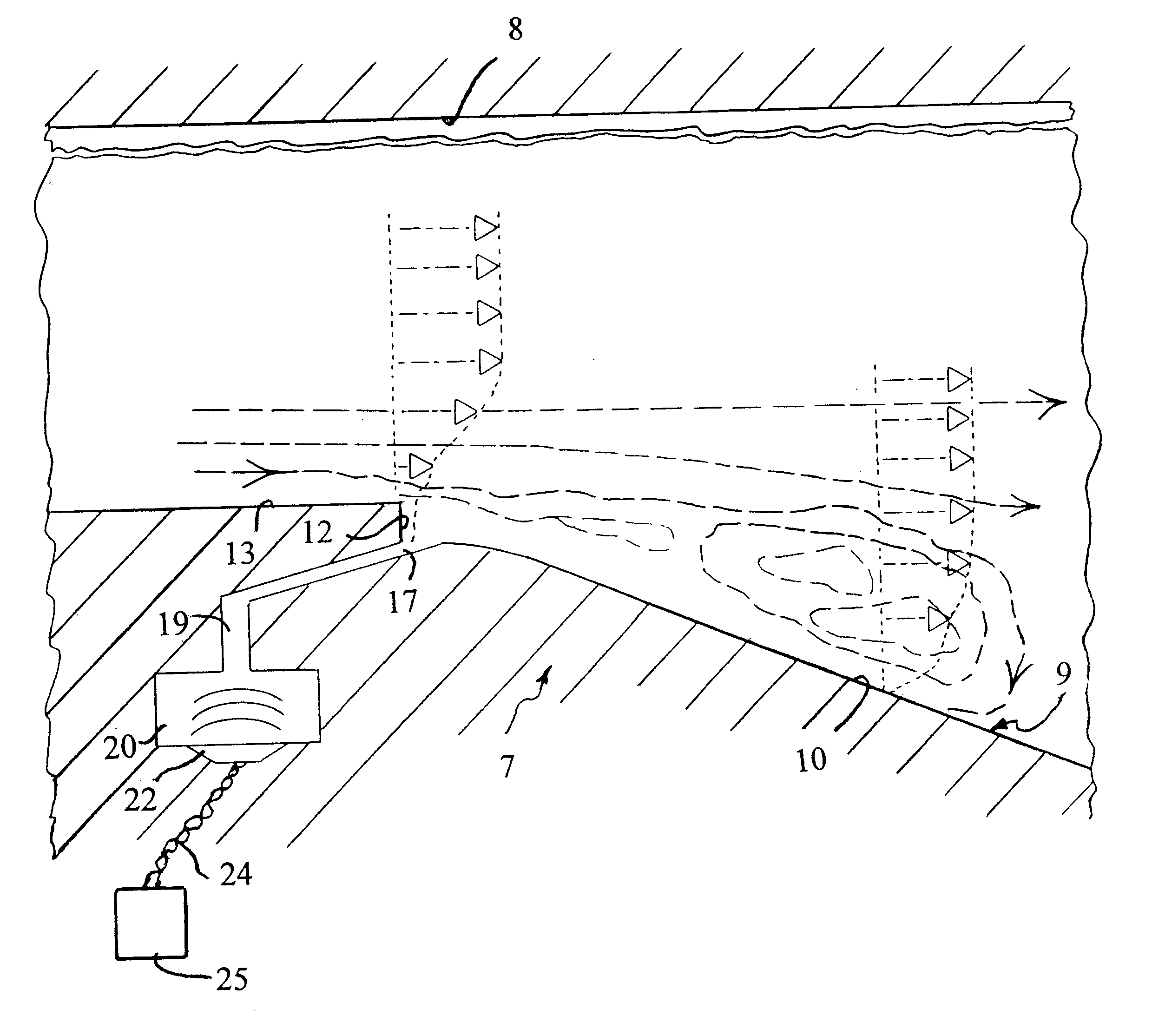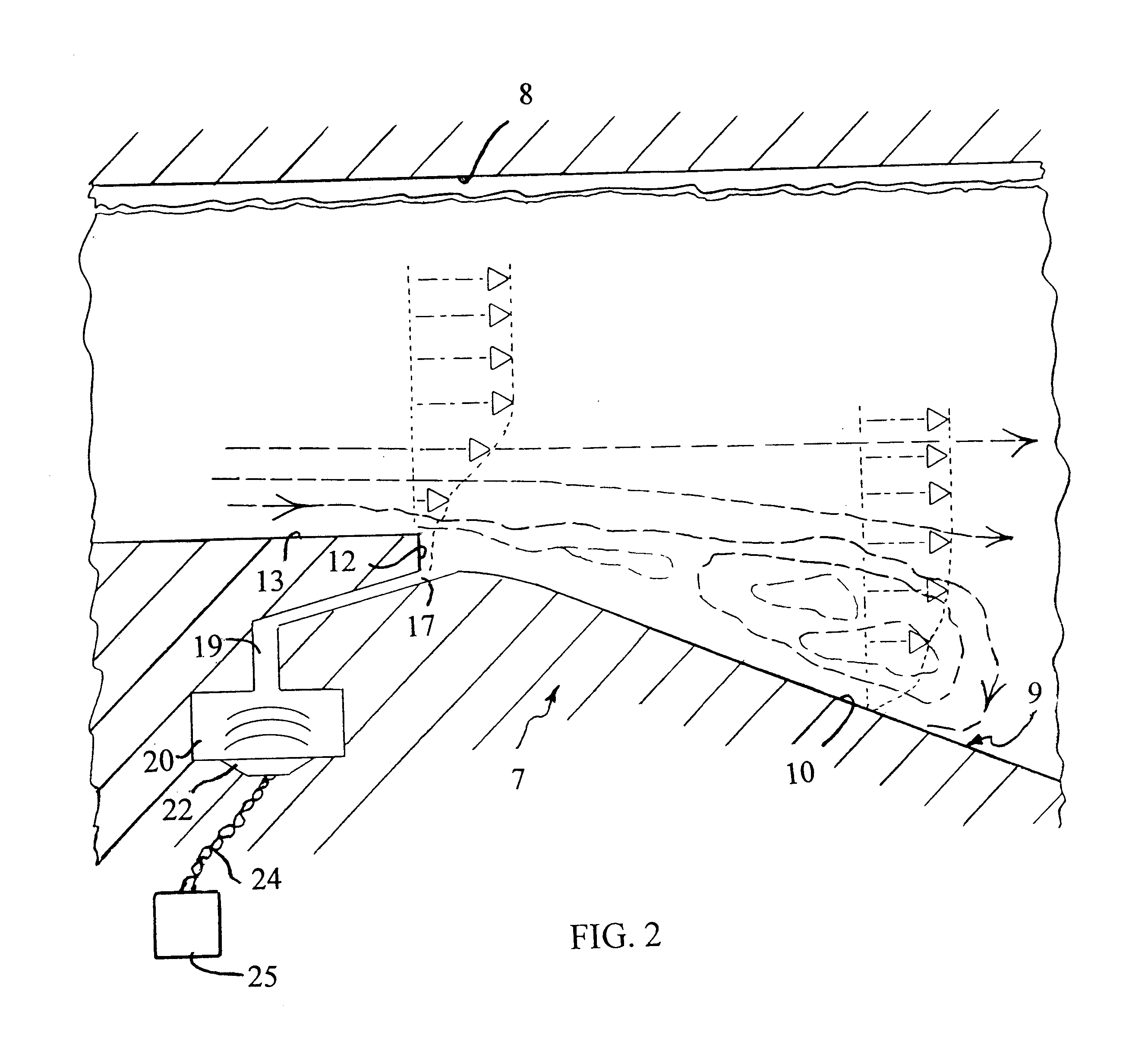Control of flow separation with harmonic forcing and induced separation
a flow separation and harmonic technology, applied in the direction of engine components, circuit elements, thin material processing, etc., can solve the problems of endangering the effectiveness of the control, difficult to correctly position the control device, and point to migrate a functionally significant distance, so as to reduce the parasitic drag and energy consumption.
- Summary
- Abstract
- Description
- Claims
- Application Information
AI Technical Summary
Benefits of technology
Problems solved by technology
Method used
Image
Examples
Embodiment Construction
Referring to FIG. 1, a two-dimensional expansion 7 has an upper surface 8 parallel with the flow and a lower surface 9 with an expanding wall 10 at an included angle, .theta., of about 23.degree., and a parallel wall 11. The flow, indicated by dash lines, reveals large transitory stall, involving large-scale, unsteady separation. In FIG. 1, the dot / dash arrows and the dotted lines indicate magnitude of flow velocity, but not direction.
Referring to FIG. 2, in accordance with the invention, the expander surface 9 is provided a protrusion formed by a reverse step 12 between a surface 13 which is parallel to the inlet flow, and the diffuser surface 10 induces a small-scale flow separation, somewhat greater than the thickness of the boundary. At the base of the step 12 there is an inlet 17, which comprises a cross stream slot connected by means of a channel 19 to a chamber 20 to which there is attached a loudspeaker 22, to obtain an oscillatory, zero-mass flux fluid flow into and out of ...
PUM
 Login to View More
Login to View More Abstract
Description
Claims
Application Information
 Login to View More
Login to View More - R&D
- Intellectual Property
- Life Sciences
- Materials
- Tech Scout
- Unparalleled Data Quality
- Higher Quality Content
- 60% Fewer Hallucinations
Browse by: Latest US Patents, China's latest patents, Technical Efficacy Thesaurus, Application Domain, Technology Topic, Popular Technical Reports.
© 2025 PatSnap. All rights reserved.Legal|Privacy policy|Modern Slavery Act Transparency Statement|Sitemap|About US| Contact US: help@patsnap.com



